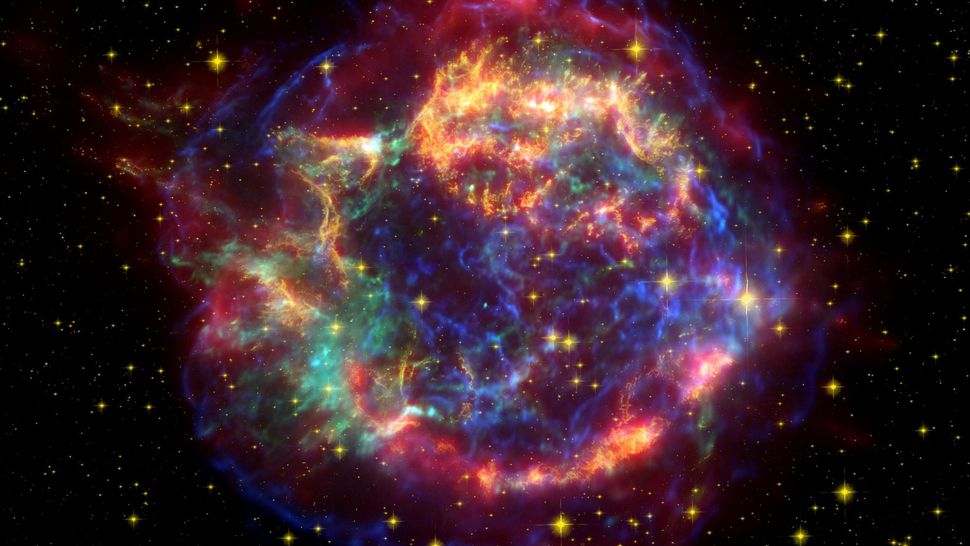Strange 'reverse shock wave' supernova is exploding in the wrong direction
By Harry Baker published about 3 hours ago
Part of the shock wave is shrinking rather than expanding

A colorized image of Cassiopeia A based on data from the Hubble, Spitzer and Chandra space telescopes. (Image credit: NASA/JPL-Caltech)
A powerful shock wave traveling through a cloud of gas left behind by the explosive death of a star has a bizarre quirk: Part of it is traveling in the wrong direction, a new study reveals.
In the study, researchers found that the shock wave is accelerating at different rates, with one section collapsing back toward the origin of the stellar explosion, or supernova, in what the study authors call a "reverse shock."
Cassiopeia A is a nebula, or gas cloud, left behind by a supernova in the constellation Cassiopeia, around 11,000 light-years from Earth, making it one of the closest supernova remnants. The nebula, which is around 16 light-years wide, is made of gas (mainly hydrogen) that was expelled both before and during the explosion that ripped apart the original star. A shock wave from that explosion is still rippling through the gas, and theoretical models show that this shock wave should be expanding evenly, like a perfectly rounded balloon that's constantly being inflated.
. . .
"For a long time, we suspected something weird was going on inside Cassiopeia A," lead author Jacco Vink, an astronomer at the University of Amsterdam in the Netherlands, told Live Science. Previous studies had shown that the internal motions within the nebula were "rather chaotic" and highlighted that the western region of the shock wave moving through the gas cloud might even be going in the wrong direction, he added.
More:
https://www.livescience.com/supernova-reverse-shock-wave
